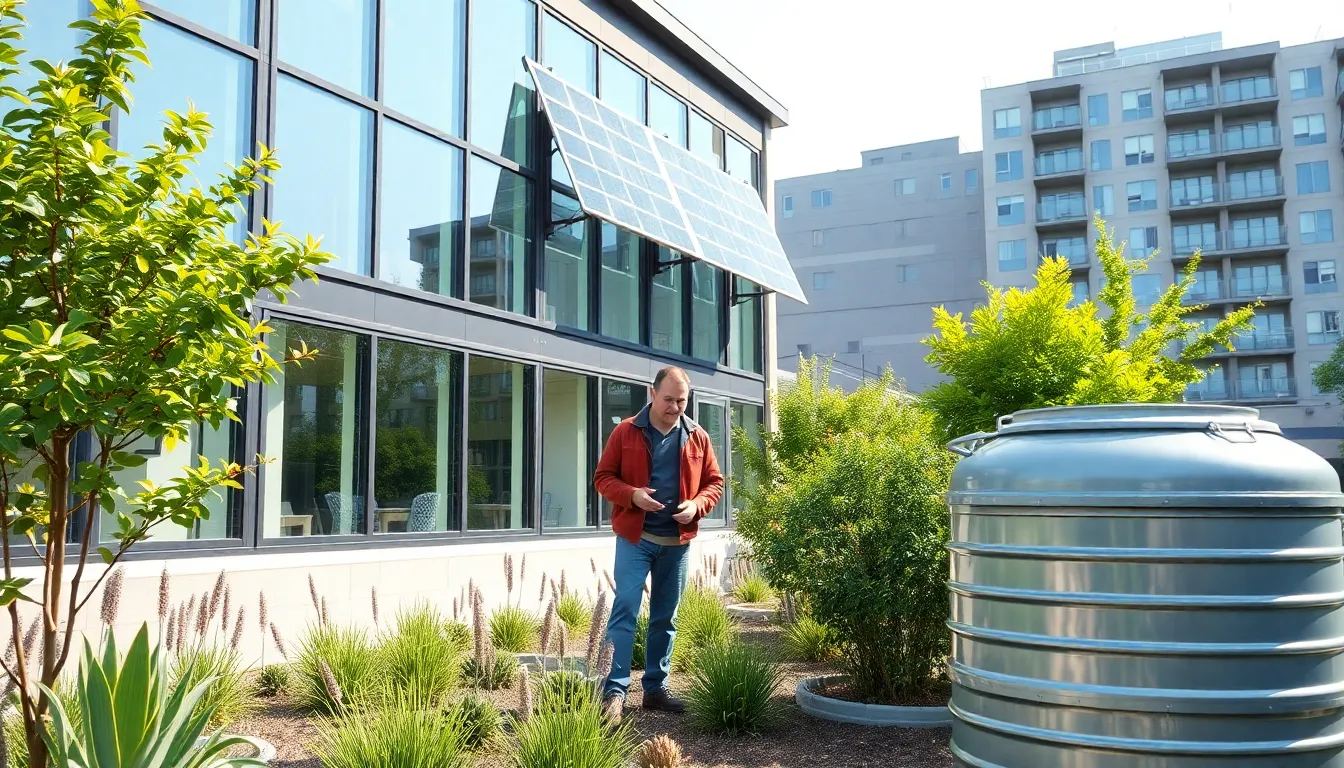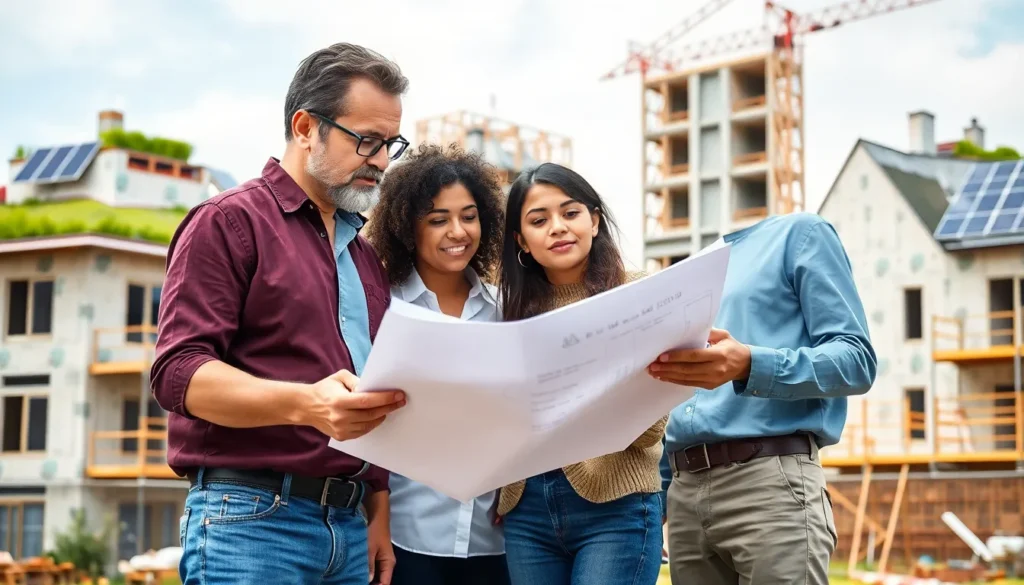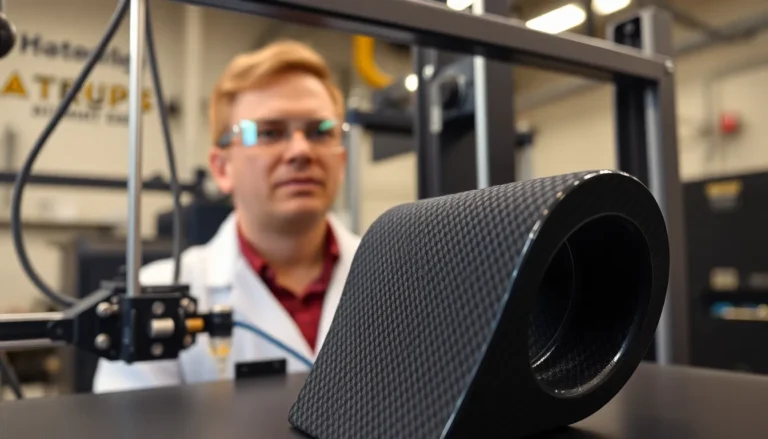Table of Contents
ToggleIn a world where the climate’s throwing tantrums like a toddler denied dessert, sustainable building technology emerges as the grown-up solution we desperately need. Imagine constructing homes and offices that not only look good but also give Mother Nature a well-deserved high-five. This isn’t just about saving the planet; it’s about creating spaces that are energy-efficient, eco-friendly, and surprisingly stylish.
Overview of Sustainable Building Technology
Sustainable building technology encompasses techniques and materials that minimize environmental impact while promoting energy efficiency. These advancements lead to reduced carbon emissions and lower energy consumption in construction and operation.
Energy-efficient designs, such as passive solar heating and natural ventilation, capitalize on the sun’s energy and wind patterns. Innovative insulation materials enhance thermal performance, resulting in significant energy savings. Additionally, smart technology automates energy management, optimizing resource use in real-time.
Eco-friendly materials contribute to sustainability through reduced toxicity and resource depletion. Recycled resources, like reclaimed wood and recycled metal, offer durability and aesthetic appeal. Green roofs improve insulation, lower urban heat effects, and support biodiversity by providing habitats for various species.
Water conservation technologies play a vital role in sustainable building. Rainwater harvesting systems collect rainfall for non-potable uses. Low-flow fixtures and efficient irrigation systems significantly reduce water consumption without compromising comfort.
Building certification programs, such as LEED and BREEAM, establish benchmarks for sustainability. These frameworks guide developers in implementing best practices for energy efficiency, resource management, and occupant health. Adhering to these standards results in recognition for excellence in sustainable construction.
Developers and architects increasingly prioritize sustainability in their projects. This shift reflects consumer demand for greener spaces that enhance quality of life. Ultimately, sustainable building technology not only addresses the environmental crisis but also fosters healthier, more resilient communities.
Key Principles of Sustainable Building

Sustainable building focuses on several essential principles that enhance environmental performance and occupant well-being.
Energy Efficiency
Energy efficiency stands at the forefront of sustainable building practices. Techniques like passive solar heating harness the sun’s warmth, while natural ventilation systems utilize wind patterns. Advanced insulation materials significantly reduce energy consumption by maintaining optimal indoor temperatures. Additionally, smart technologies actively manage energy use, ensuring efficient resource allocation. According to recent studies, buildings designed with energy efficiency principles can reduce energy costs by up to 30%. Sustainable structures not only minimize carbon footprints but also create comfortable living environments for occupants.
Water Conservation
Water conservation measures play a crucial role in sustainable building. Implementing rainwater harvesting systems allows properties to collect and reuse rainwater, reducing dependence on municipal supplies. Low-flow fixtures, like faucets and toilets, decrease water usage without compromising user comfort. Integrated landscape designs encourage native flora, minimizing irrigation needs and fostering local biodiversity. Reports indicate that these strategies can cut water consumption by 20% to 50%. Prioritizing water conservation results in sustainable environments that safeguard this vital resource for future generations.
Types of Sustainable Building Technologies
Sustainable building technologies encompass various approaches that enhance energy efficiency and minimize environmental impact. This section explores two significant aspects: renewable energy systems and green materials.
Renewable Energy Systems
Renewable energy systems play a crucial role in sustainable building design. Solar panels capture sunlight, converting it into electricity to reduce dependency on fossil fuels. Wind turbines generate clean energy, potentially powering entire buildings with minimal ecological harm. Geothermal systems utilize the Earth’s consistent temperatures for heating and cooling, promoting energy efficiency. Moreover, combining these systems often results in significant cost savings, with some buildings experiencing energy cost reductions of up to 50%. These innovations establish a foundation for a more sustainable future.
Green Materials
Green materials contribute significantly to environmentally responsible construction. Recycled materials, such as reclaimed wood and recycled metal, limit resource depletion while maintaining structural integrity. Low-VOC paints enhance indoor air quality, promoting healthier living environments. Additionally, sustainable materials, like bamboo and cork, offer durability and renewability, making them appealing choices for modern designs. The use of these materials reflects a commitment to sustainability that resonates with homeowners and builders alike, supporting an eco-friendly lifestyle. By utilizing green materials, construction practices can decrease overall environmental impact while meeting burgeoning consumer demand for sustainable solutions.
Benefits of Sustainable Building Technology
Sustainable building technology offers numerous benefits, shaping healthier environments while promoting financial savings.
Environmental Impact
Sustainable building technology significantly reduces environmental harm. It minimizes carbon emissions through energy-efficient designs, leading to a decrease in greenhouse gases. The use of eco-friendly materials, such as recycled resources, also lowers toxicity in construction. Green roofs support biodiversity while providing insulation and mitigating urban heat. Water conservation methods contribute to a 20% to 50% reduction in water use, preserving this vital resource for future generations. These strategies collectively promote a more sustainable planet and contribute to combating climate change.
Economic Advantages
Economic benefits accompany sustainable building technology. Buildings designed with energy-efficient features can achieve energy cost reductions of up to 30%. Investment in renewable energy systems, like solar panels and wind turbines, often leads to significant savings on energy bills. Utilizing green materials not only supports environmental goals but also enhances indoor air quality, positively impacting occupant health. Certification programs, such as LEED and BREEAM, help developers recognize the economic value of sustainable practices, ensuring long-term financial gains. These advantages reflect the increasing importance of sustainability in construction.
Challenges in Implementing Sustainable Building Technology
Implementing sustainable building technology faces several challenges that impact its effectiveness and adoption.
Cost Considerations
Budget constraints frequently hinder the integration of sustainable technologies, as upfront investments can exceed traditional construction costs. While energy-efficient systems and eco-friendly materials lower operational expenses, initial financial outlays may dissuade developers. Potential long-term savings, which can reach 30% in energy costs, are often overlooked due to immediate expenses. Additionally, smaller projects might not achieve economies of scale, resulting in higher per-unit costs for sustainable solutions.
Regulatory Barriers
Regulations often complicate the adoption of sustainable building technologies. Local codes may not accommodate advanced eco-friendly practices or innovative designs, creating roadblocks for developers. Compliance with multiple standards, such as building codes and environmental regulations, can add time and complexity to projects. Variability in certification processes, such as those from LEED and BREEAM, may create confusion and discourage developers. Despite these hurdles, aligning local policies with sustainability goals can encourage broader adoption of green technologies.
Sustainable building technology is reshaping the construction landscape by addressing climate change while enhancing quality of life. By integrating energy-efficient designs and eco-friendly materials, it offers a path toward reducing carbon footprints and conserving vital resources. The growing demand for greener spaces reflects a collective commitment to environmental stewardship and occupant health.
Despite facing challenges like initial costs and regulatory hurdles, the long-term benefits of adopting sustainable practices are undeniable. As developers and architects embrace these innovations, they pave the way for healthier, more resilient communities. The future of construction lies in sustainable solutions that not only protect the planet but also create inviting spaces for generations to come.




